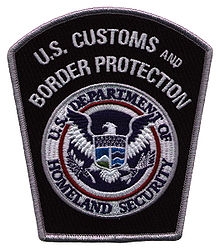Penalties Part 1 — Mitigating Factors
Penalties Part 1 — Mitigating Factors
Subpart H of the Foreign Trade Regulations (FTR) outlines the penalty provisions for export violations. Potential violations include, but are not limited to, failure to file Electronic Export Information (EEI) in the Automated Export System (AES), submission of false or misleading information, and late filing. The U.S. Customs and Border Protection (CBP) have been enforcing these penalties since February 2009, which range from $1,100 up to $10,000 per violation for each day of delinquency and up to $10,000 for other violations. The best way to avoid fines and penalties is to understand the FTR and to establish compliance efforts throughout your organization.
As a result of enforcement of the FTR, parties involved in the export process want to know what they can do to maintain compliance to avoid fines and penalties. Let’s jump forward to the situation where a penalty has been issued against your company. If it is a civil penalty, there are mitigating factors that may lower the amount of the fine. Here is a list of mitigating factors, as stated in the CBP Penalty Guidelines (not an exhaustive list):
- Voluntary self-disclosure of the violation
- Clear documentation of remedial measures undertaken to prevent future violations
- Exceptional cooperation with CBP, U.S. Census Bureau or the Bureau of Industry and Security, or any government agency with export control or enforcement responsibilities
- The violation was an isolated occurrence
- The party demonstrates that it has a systematic export compliance effort
There are key factors companies can glean from these mitigating factors to ensure compliance and possibly lower a penalty if received. Training employees is critical to maintaining compliance with the FTR and other federal government agencies. It is also important for companies to conduct internal audits to identify potential violations. Creating or improving a systematic export compliance program that includes the FTR reporting requirements, commodity classification, AES filing instructions, and voluntary self-disclosure procedures, are key to maintaining compliance. Documented policies and procedures are critical to your company if a penalty is issued. I recommend that anyone involved in the export process retain clear and concise documentation. Lastly, you are in control of your company’s compliance, as it pertains to exporting laws and requirements. BE PROACTIVE!!!!!
Next time, we’ll discuss aggravating factors to avoid, that can hurt your company if a penalty is issued. Stay tuned.




